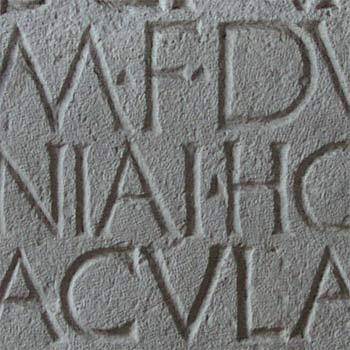Subscribe to blog updates via email »
Pompeii Amphitheater Inscription: Where Do Serifs Come From?

During my studies in Italy, I took this photograph of an inscription inside of the Amphitheater of Pompeii. It dates to sometime shortly after the restoration of the Amphitheater after the earthquake of 62 A.D.. This is a fascinating specimen to me because I think it exhibits the relationship between medium and form in type design.
In Fred Smeijers’ Counterpunch: Making Type in the Sixteenth Century, Designing Typefaces Now, he implies that serifs such as those on the typography of Trajan’s Column are a product of the form derived from brushing the letters on the stone (the type was brushed on before being chiseled in), and trying to complement the one-sided serif that inevitably showed up at each stroke’s terminus (p. 53). This may very well be the birth of the serif, but I think at least for this inscription, the limitations of the chisel spawned the serifs.

WANT TO WRITE A BOOK?
Download your FREE copy of How to Write a Book »
(for a limited time)

One reason I believe the form of these letters is derived from the chisel rather than the brush is the lack of weight variation in the strokes that a brush would yield from changes in pressure. Another reason is that the serifs only appear where a stroke doesn’t terminate into another stroke. You can imagine how unsightly the terminals of a stroke formed by a chisel would look if the designer hadn’t turned the chisel perpendicular to the stroke for a finishing touch. Notice how the “D” doesn’t have serifs, such as would be the case on a brush-derived letter such as Trajan. This may have been the first sans-serif type design were it not for the limitations of the chisel.
Of course, a digital type designer doesn’t have this concern, and it makes it easy to wind up designing a typeface that doesn’t have the rational beauty that tool-derived forms have. This can be difficult to achieve when you’re designing by drawing the outline of a type design, rather than using a tool to draw the individual stroke.



